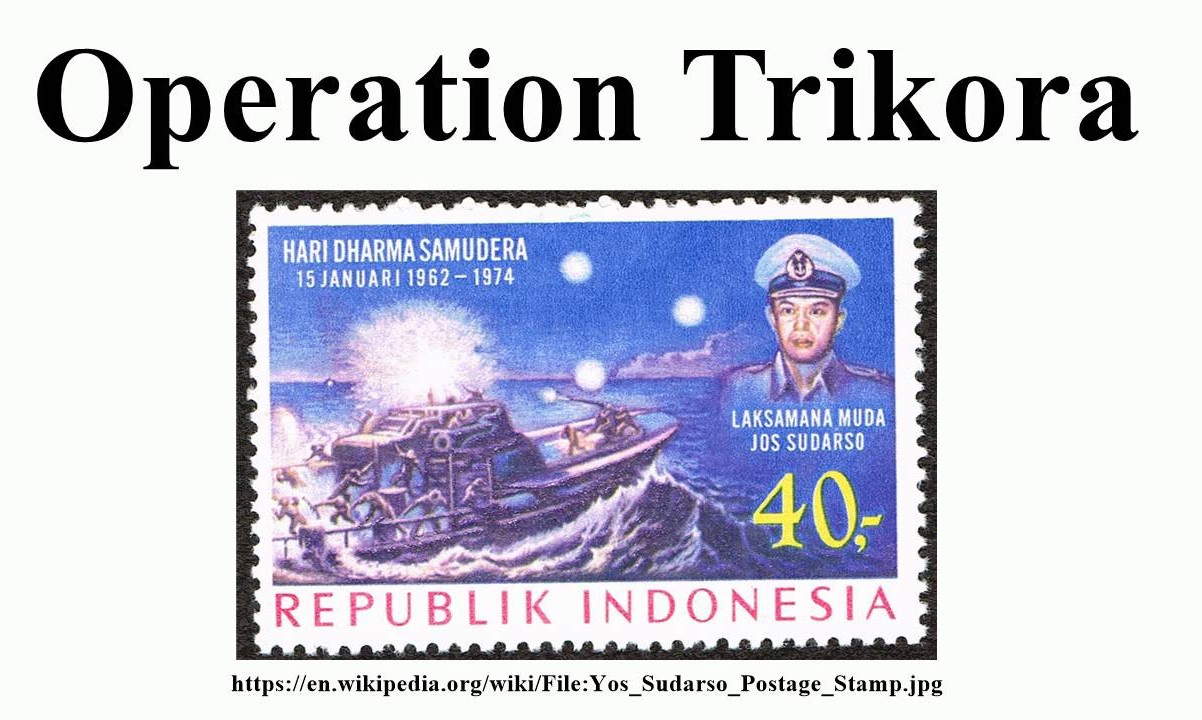
Operation Trikora was a significant military campaign launched by Indonesia in 1961. Its primary goal was to annex Western New Guinea, then under Dutch control. This operation marked a crucial moment in Indonesian history, showcasing the nation's determination to reclaim territories considered part of its rightful domain. Operation Trikora involved a mix of diplomatic efforts, military maneuvers, and covert operations. The campaign saw the deployment of thousands of troops, naval blockades, and even paratrooper drops. Despite the intense efforts, the operation didn't result in immediate success. However, it played a pivotal role in the eventual transfer of Western New Guinea to Indonesia in 1963. This bold move by Indonesia remains a topic of interest for historians and military enthusiasts alike.
Key Takeaways:
- Operation Trikora was a bold move by Indonesia to end Dutch colonial rule in Western New Guinea. It involved military tactics like amphibious landings and guerrilla warfare, leading to the region's transfer to Indonesia.
- President Sukarno's Operation Trikora successfully secured Western New Guinea for Indonesia, strengthening the country's unity and anti-colonial stance. The international community, including the US and UN, played crucial roles in the conflict's resolution.
What Was Operation Trikora?
Operation Trikora was a significant military campaign in Indonesian history. It aimed to seize control of Western New Guinea from Dutch colonial rule. Here are some fascinating facts about this operation:
- Operation Trikora was launched on December 19, 1961, by President Sukarno.
- The operation's name, Trikora, stands for "Tri Komando Rakyat," meaning "People's Triple Command."
- Western New Guinea, also known as West Papua, was the target of this operation.
- The operation was part of Indonesia's broader strategy to end Dutch colonialism in the region.
- President Sukarno declared the operation in Yogyakarta, a city with historical significance in Indonesia's independence movement.
Key Players in Operation Trikora
Several key figures played crucial roles in the planning and execution of Operation Trikora. Let's delve into who they were and their contributions:
- President Sukarno was the mastermind behind the operation.
- General Nasution served as the Chief of Staff of the Indonesian Army.
- Air Marshal Suryadarma was responsible for the Indonesian Air Force's involvement.
- Rear Admiral Martadinata led the Indonesian Navy during the operation.
- Colonel Suharto, who later became Indonesia's second president, played a significant role in the military strategy.
Military Strategies and Tactics
Operation Trikora involved various military strategies and tactics to achieve its objectives. Here are some key aspects:
- The operation included amphibious landings on the coast of Western New Guinea.
- Paratroopers were deployed to secure key locations inland.
- The Indonesian Navy conducted blockades to cut off Dutch supply lines.
- Guerrilla warfare tactics were employed to disrupt Dutch forces.
- The Indonesian Air Force carried out aerial reconnaissance and bombing missions.
International Reactions and Diplomacy
Operation Trikora had significant international implications, leading to various diplomatic efforts and reactions:
- The United States played a mediating role in the conflict.
- The United Nations intervened to prevent a full-scale war.
- Australia was concerned about the stability of the region.
- The Soviet Union supported Indonesia's efforts against Dutch colonialism.
- The New York Agreement was signed in 1962, leading to a peaceful resolution.
The Outcome of Operation Trikora
The operation had a lasting impact on Indonesia and the region. Here are some key outcomes:
- Western New Guinea was transferred to United Nations Temporary Executive Authority (UNTEA) in 1962.
- In 1963, the region was officially handed over to Indonesia.
- The operation strengthened Indonesia's national unity and anti-colonial stance.
- It marked a significant victory for President Sukarno's leadership.
- The region is now known as Papua and remains an integral part of Indonesia.
The Legacy of Operation Trikora
Operation Trikora, launched in 1961, aimed to reclaim West Papua from Dutch control. This bold move by Indonesia showcased its determination to unify the archipelago. The operation involved a mix of military action, diplomacy, and propaganda. Despite facing international pressure, Indonesia's persistence paid off. By 1963, West Papua was integrated into Indonesia following the New York Agreement. This operation highlighted Indonesia's strategic prowess and its commitment to national unity. It also set a precedent for future territorial disputes in the region. The legacy of Operation Trikora remains a significant chapter in Indonesia's history, reflecting its resilience and strategic acumen. Understanding this operation provides valuable insights into the complexities of post-colonial state-building and regional geopolitics.
Frequently Asked Questions
Was this page helpful?
Our commitment to delivering trustworthy and engaging content is at the heart of what we do. Each fact on our site is contributed by real users like you, bringing a wealth of diverse insights and information. To ensure the highest standards of accuracy and reliability, our dedicated editors meticulously review each submission. This process guarantees that the facts we share are not only fascinating but also credible. Trust in our commitment to quality and authenticity as you explore and learn with us.
